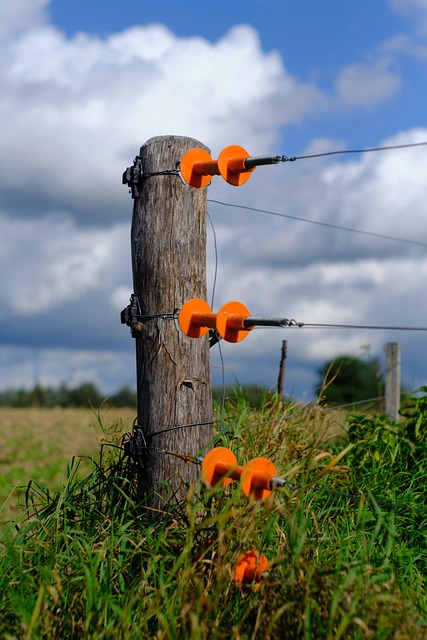Fences play a vital role in defining outdoor spaces, and proper care ensures their longevity. This article guides you through the process of enhancing your wooden fence’s aesthetics and durability with staining and sealing. From understanding the benefits of different stain types to choosing the perfect color and formula, we cover everything. Learn how preparation, sealing, and regular maintenance can transform your fence, ensuring it stands strong against the elements for years to come.
- Understanding Fence Staining: Benefits and Types
- Preparing Your Wooden Fence for Staining
- Choosing the Right Stain: Color and Formula
- Sealing for Protection: The Final Step
- Maintenance Tips for Longevity of Stained Fences
Understanding Fence Staining: Benefits and Types
Fence staining is a process that involves applying a colorant to enhance the appearance and protect wooden fences. It offers several benefits, including increasing the visual appeal of your outdoor space, improving the overall curb appeal of your property, and prolonging the life of the wood by shielding it from elements like UV rays, moisture, and mold growth. The types of fence staining vary based on the ingredients and application methods. Water-based stains are popular for their low odor, quick drying time, and ease of cleanup. Oil-based stains, on the other hand, provide deeper colors and better protection against harsh weather conditions but can emit strong odors and take longer to dry. Each type has its advantages, catering to different preferences and needs.
Preparing Your Wooden Fence for Staining
Before applying any stain or sealer to your wooden fence, proper preparation is key. Start by thoroughly cleaning the fence to remove any dirt, dust, mildew, or mold. This can be done with a pressure washer or a stiff-bristled brush and a garden hose. Ensure the wood is dry before proceeding, as moisture can affect the adhesion of the stain.
Next, assess the fence for any repairs needed. Fill in any cracks, holes, or damaged boards with a suitable wood filler. Sand the repaired areas gently to create a smooth surface. Remove all loose debris and dust from the fence’s surface using a clean cloth or brush. This meticulous preparation will ensure an even application of stain and prolong the life of your fence.
Choosing the Right Stain: Color and Formula
When it comes to enhancing your wooden fence with stain, one of the most crucial decisions is selecting the perfect color and formula. The right stain should complement your home’s exterior while also offering protection from elements like UV rays, rain, and snow. Start by evaluating the existing color of your wood—do you want to enhance its natural tone or dramatically transform it? Popular choices include earthy tones, rich browns, or even vibrant colors for a bold statement.
Additionally, consider the stain’s formula. Semi-transparent stains allow more light to pass through, showcasing the wood grain while providing some protection. Transparent stains offer maximum visibility of the wood, making them ideal for showcasing the natural beauty of your fence. On the other hand, solid or semi-solid stains create a deeper, richer color and provide better protection against water penetration and UV damage.
Sealing for Protection: The Final Step
After staining your wooden fence, the final step is to seal it for protection. This crucial process acts as a barrier against the elements, preventing water, UV rays, and other environmental factors from penetrating the wood. Sealing not only extends the life of your fence but also maintains its color and appearance over time.
Choose a high-quality sealant designed specifically for outdoor use on wooden surfaces. Apply it evenly across the entire fence, ensuring every section is coated. A well-sealed fence will be less prone to rot, cracking, and fading, giving you many years of enjoyment without requiring frequent maintenance.
Maintenance Tips for Longevity of Stained Fences
Regular maintenance is key to keeping your stained fence looking its best and ensuring its longevity. After initial staining, it’s recommended to apply a protective sealer annually. This step is crucial as it shields the wood from harmful UV rays, rain, and other environmental factors that can cause fading or peeling.
In between sealings, keep an eye out for any signs of wear and tear, such as chipping or fading. Light touch-ups with fresh stain can rejuvenate the fence’s appearance. Additionally, periodic cleaning will help maintain the vibrancy of the color. Use a soft brush and mild soap to gently remove dirt and grime, avoiding harsh chemicals that could damage the finish.
